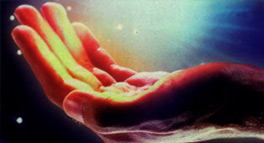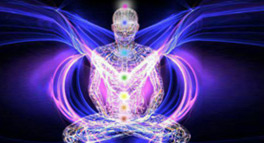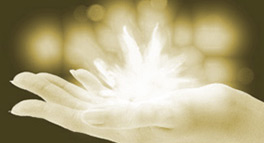One cannot stress enough the importance of well-balanced, healthy and harmonious Chakras in maintaining holistic health. The importance of Chakras for a balanced mind-body-spirit has been ignored for long. Even though we are blessed with abundance of information on these wheels of energy called ‘Chakras’ in ancient Indian literature, some misconceptions have kept them out of reach of the common people.
So what then are Chakras and what is the role that they play in our physical, mental and spiritual well-being?
A body of energy called Aura permeates our physical body. However, the Aura is unevenly distributed and like the whirlpools in an ocean, there are swirling vortexes of energy in our Aura. These vortexes of energy look like spinning wheels and hence the name 'Chakras'.
One way to fully understand your whole being is to understand and experience your Chakra energetic system. These wheels of energy blend your life-force energy with your physical energy. They are an integral part of our life-force energy keeping our whole mind and body working together. There are major and minor chakras; the major chakras manage your most critical bodily functions and issues, and the minor chakras regulate less fundamental needs. These energy centers are located on and around your body.
The experiences that we go through, our thoughts and attitudes can, and does cause imbalance or blocks in our Chakras. Especially those who tend towards negative emotions or reactions are more prone to have completely or partially blocked Chakras and many times even blown out Chakras. All our expressions, feelings and senses, including the sixth sense, are associated with the major Chakras.
Any problem that you have, whether it a physical ailment, negative emotion(s), faulty beliefs or rigid, dogmatic spiritual perceptions, stems from or creates stuck energy. To fully heal from an ailment, you must release the stagnant energy that is the root cause of it. By working with your Chakras, you can clear away the stuck energy that does not serve your highest purpose. This broadens your perspective which will assist you in making the changes necessary for better health, relationships and personal and financial wellbeing.
With free and clear Chakras, you realize abundance in loving relationships, you become in touch with your feelings and creativity, you access your personal power, you are able to fully give and receive love, you are open to express yourself and communicate freely, you gain an inner understanding of your being and the world that you live in, and you become connected to your highest self and feel an internal harmony that everyone should experience.
There are seven major Chakras, each of which is located in a specific area, have a specific name and a specific set of functions. They regulate the energy flow through out our bodies and also govern the seven major endocrine glands and by extension various parts of our bodies.
Muladhara Chakra
The first Chakra is called ‘Muladhara’ Chakra or Root Chakra. ‘Mul’ means root and ‘adhar’ means support or foundation. Its developmental stage is from the time you are in the womb till the age of 12 months.
As the name suggests, the root chakra provides support for your physical existence. For a tree to grow and bloom, the roots should be healthy and strong and get nutrition to remain that way. Similarly, for strength, vitality and a strong skeletal system, the root chakra should be open and balanced.
|
Muladhara Chakra is associated with our basic needs of survival, hence food, clothing, rest, shelter, money and procreation. When the root chakra is open and clear you are able to take the steps necessary to take care of yourself financially and provide for what is rightfully yours; a comfortable home, food and clothing.
However, the Chakra becomes dysfunctional due to reasons like insecurity, sexual abuse, basic requirements not met while growing up, and complications while birthing, issues of abandonment, etc.
Dysfunctional chakra means either it is dominant or weak, blocked or blown out. The symptoms are:
Physical : Addictions/ Addictive Behaviour, Anorexia, Constipation, Colitis, Depression, Diarrhea, Frequent urination, Glaucoma, Hemorrhoids, Hypertension, Impotence, Kidney stones, Knee problems, Obesity, Piles, Sciatica, Weight gain/ loss, Prostate cancer, Rectal cancer, Blood diseases, Skin disorders (especially rashes), Itching, Pain at base of spine, Migraines, Spinal curvatures, Sciatic, Lumbago, Painful or frequent urination, Backaches, Poor circulation in legs, Swollen ankles, Weak arches and ankles, Cold feet, Weak legs, Leg cramps, Eczema.
Emotional : Anger of the past, Fear of deadlines, Afraid to let go, Feeling burdened, Terror of abandonment, rage from hurt or anger, Guilt, Sexual pressure, Numbness, Hypocrisy, Uncertainty regarding money and the future, Inability to flow with life, Holding onto old ideas, Untrusting of life, Lack of integrity or courage or convictions, Blaming others, Deep hurt, Longstanding resentment, Deep grief, Carrying hatreds, Tension.
Many hard core addictions such as alcohol, sex and cocaine are related to imbalanced first chakra. Rapists have twisted perception of sex because of the root chakra dysfunction.
Swadhisthana Chakra
The second chakra is called Swadhisthana Chakra, meaning ‘sweethness’. It is also called Sacral Chakra, located just under the navel and deals with our duality, the feminine and masculine energy, or shiva and shakti or yin and yang. Its developmental stage is from the age of 6 months to 24 months.
The swadhisthana chakra is associated with our senses or sensual pleasure, and hence it is also called our sexual chakra. Though it is not limited only to our sexual exploration but also extends all the pleasures that we seek on physical level, in our different role as a human being. The mother’s pleasure in nurturing her baby is also a second chakra function.
|
When your second chakra, is open you are in touch with your feelings and are able to express them. You are also able to feel the difference between your own and others feelings. This opens your creativity and allows you to be who you are.
However, the Swadhisthan Chakra can be dysfunctional if you are not in touch with your feelings or emotions, if there are stored, stuck or unexpressed emotions from self or others, feelings of unworthiness, judgement against creative expression, co-dependency, etc.
The symptoms of a dysfunctional second chakra are:
Physical : Bladder, Cystitis, Endometriosis, Fertility issues, Miscarriages, Fibroids, Irritable Bowel Syndrome, Kidney complaints, Menstrual Problems, Muscle Cramps/ Spasms, Ovarian Cysts, Pre-menstrual Syndrome, Prostates Disease, Testicular Disease, Uterine Fibroids, Candida, Impotency, Bedwetting, Frigidity, Creative Blocks.
Emotional : Guilt, Embarrassment, Shame, Distrust, Impatience, Desire to hide, Nervousness, Holding on, Uptight, Frustration, Inadequacy, Anger, Tendency to push for things, Feeling victimized, Expecting the worst, Numbness, Neediness, Detaching from oneself and going out of body, Feeling shut down, Depression, Denying your own needs, Not supporting yourself, Blaming others, Anger at a mate, Punishing oneself, Denial of self, Rejecting femininity or masculinity, Bitter words left unspoken, Sexual pressure, Tension, Rigid social beliefs, Spite against a previous mate, Fear of mother, Emotional overflow, Years of controlling emotions, Fear of father, Denial of pleasure, A belief that sex or intimacy/touch is bad.
Soft addictions, such as overeating or addiction to junk food or other foods is related to the second chakra dysfunction.
Manipura Chakra
The third chakra is called Manipura Chakra, which means ‘Lustrous gem’. It is also called Solar Plexus Chakra and is the seat of our personal power. The third chakra stores our judgments, opinions and beliefs that we have gathered throughout our lives; about ourselves and the world we live in. Its developmental stage is the age of 18 to 42 months.
When your third chakra is open and balanced, you exercise the choices in your life and become in charge of your own destiny. You are also able to choose your own beliefs rather than conforming to the external beliefs imposed upon you.
| Location | Solar Plexus |
| Colour | Yellow |
| Element | Fire |
| Sense | Sight |
| Sound | Ram |
| Related Endocrine Gland | Pancreas, Adrenal |
| Body Functions | Digestive Functions |
The reasons for third chakra dysfunction are beliefs or judgements that result in a lack of expression of strong emotions, such as love, hate, fear, anger, Suppressing, Denying or holding in feelings, Beliefs resulting in sense of disempowerment, Low self esteem and control issues, Not taking what is rightfully yours, Not supporting others in their personal empowerment, Feeling conflicted between who you are and who you are supposed to be, Lack of self confidence.
The symptoms of a dysfunctional third chakra are:
Physical : Food Allergies, Bulimia, Diabetes, Digestive problems, Gall stones, Hepatitis, Liver Disease, Hyper Acidity, Pancreatitis, Peptic Ulcer, Stomach problems, Jaundice, Shingles, Gall bladder problems, Anemia, Heartburn, Gastritis, Lowered resistance to diseases, Chronic tiredness, Gas, Spastic colon, Abdominal cramps.
Emotional : Fear, A feeling of ‘what’s the use’, Felt lack of love as a child, Defeated, Anger, Bitterness, Condemning, Prideful, Prolonged uncertainty, Feeling of doom, Dread, Anxiety, Denying your own power, Powerlessness, Criticism, Disappointment, Failure, Shame, Child-like reactions, Unresolved anger, Chronic complaining, Justifying, Fault-finding to deceive self, Wallowing in the past, Rejection, Lack of self-belief.
Addictions such as caffeine, beer and soda are related to the third chakra.
Anahata Chakra
The fourth chakra is called ‘Anahata’, meaning ‘Unstruck’. It is also known as Heart Chakra as it is located in the center of the chest. Its developmental stage is from 3.5 to 7 years of age. This chakra deals with love, courage and compassion.
When the Anahata Chakra is open you are able to radiate love for yourself which enables you to receive and express love unconditionally rather than becoming dependent on others to love you. This is also the level where you integrate your spiritual self with your physical being.
| Location | Center of the Chest |
| Colour | Green (also Pink) |
| Element | Air |
| Sense | Touch |
| Sound | Yam |
| Related Endocrine Gland | Thymus |
| Body Functions | Respiration and Circulation |
The contributing factors in the fourth chakra dysfunction are Not expressing soft emotions such as sorrow, heartbreak, depression, sadness, longing and pity. Inability to release or process sadness and grief. Emotional wounds that are hard to heal, Not trusting in the process of life, Getting stuck in childhood, Response to mass negativity and beliefs, Being co-dependent, Care taking issues.
The symptoms of a dysfunctional fourth chakra are :
Physical : Breast Cancer, Circulation problems, Fatigue, Heart Diseases, Immune Disorders, Lungs, Bronchitis, Pneumonia, Chest Congestion, Influenza, Functional heart conditions, Asthma, Cough, Difficult breathing, Shortness of breath, Pain in lower arms and hands, Hyperventilation, Allergies, Sleep disorders, High Blood pressure.
Emotional : Feeling attacked by life, Feeling ‘they are out to get me’, Difficulties in giving or receiving, Desperate, Tired of life, Fear, Smothering love, Unable to breath for oneself, Feeling stifled, Feeling of heartbreak, Suppression of tears, Intense sadness, Grief, Hopelessness, Despair.
Addictions such as sugar cravings, wine and smoking are related to the fourth chakra.
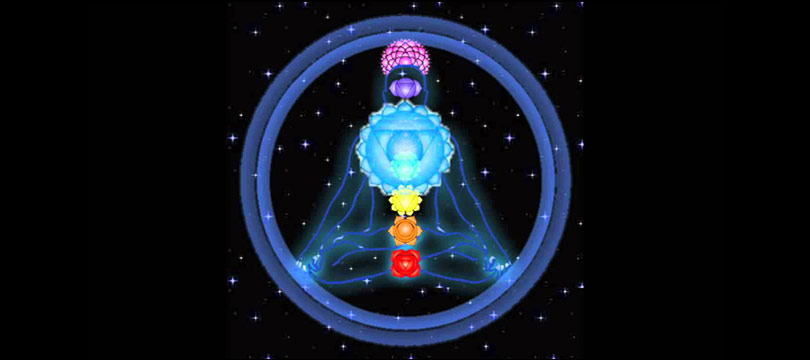
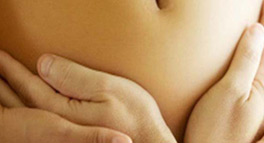
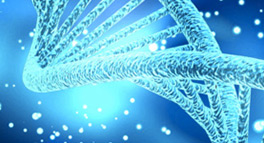
 - Vandna Garg
- Vandna Garg